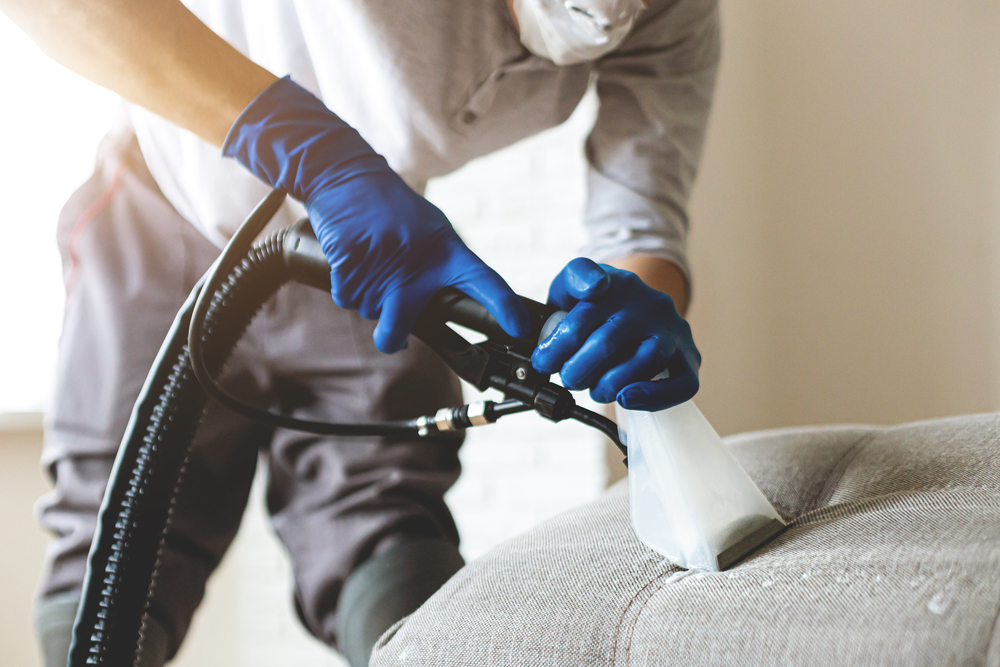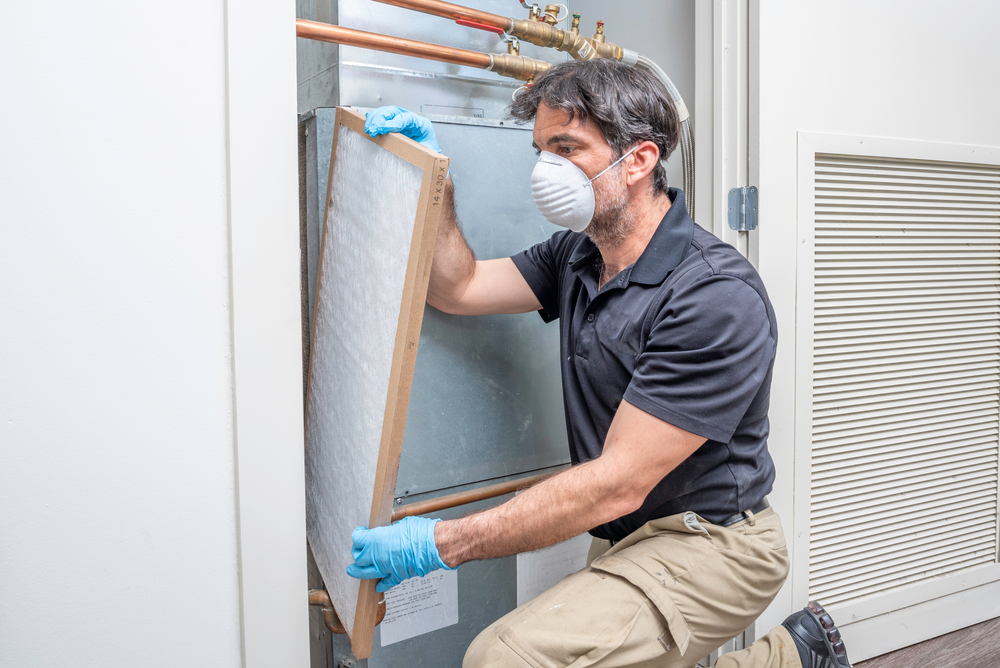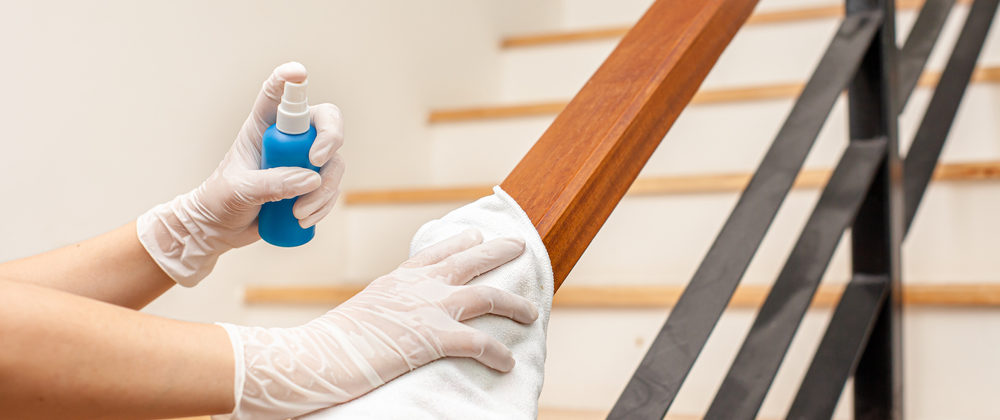Regular control room cleaning and maintenance plays a key role in the successful operation of your organization. This is because decontamination and preventative maintenance for control rooms extend the useful life of your equipment. In this blog, we’ll review the most important things to know about cleaning and maintaining your control room and the many ways it benefits your organization.
Benefits of Cleaning Your Control Room Regularly
Control rooms are 24/7/365 environments that must withstand heavy-duty use around the clock. They’re also one of your most substantial upfront and ongoing expenses, so getting a return on your investment is crucial. The best way to ensure an extended lifespan for your command center (and maximize your ROI) is regular control room cleaning and maintenance.
Unfortunately, many control rooms are not cleaned as extensively as they should be. Cleaning companies typically clean console surfaces, chairs, and flooring, but neglect a thorough deep clean. In particular, neglecting to clean the cavities in your consoles can damage your equipment and negatively impact employee health.
Ultimately, a command center that’s routinely cleaned ensures your organization continues to run smoothly. Let’s take a closer look at the benefits of regular control room cleaning.
It Promotes a Healthier Work Environment
Even with regular cleaning, dust, debris, grime, and mold buildup is inevitable in any indoor space. Neglecting to clean in and around consoles, cavities, and cables can negatively impact employee health and safety.
It’s also important to disinfect high-touch and shared surfaces on a daily basis, including (but not limited to):
- Keyboards
- Touchscreens
- Mice
- Phones
- Desks/tables
- Doorknobs
- Light switches
- Handles
Regular disinfecting helps prevent the spread of germs and keeps your employees healthy and performing at their best.
It Extends the Lifespan of Your Equipment
Along with promoting a healthier work environment, routine cleaning can help extend the lifespan of your equipment. Each component of your control room plays a key role in your organization’s daily operations. These include consoles, video walls, content management systems, simulators, control panels, and much more.
Keeping your equipment clean ensures it can stand the test of time, even under the demands of 24/7/365 use. Continuous, rigorous console use can lead to loose hardware, minor misalignments, and other damage, but consistent cleaning allows you to catch and resolve these issues early.
Along with extending the useful lifespan of your control room equipment, regular deep cleaning:
- Increases employee and organizational productivity
- Keeps equipment running more efficiently
- Reduces the possibility of equipment overheating
- Prevents the spread of airborne particulates
- Lessens the chances of unexpected downtime

Console Maintenance and Proper Cleaning Techniques
Consoles are made from many different materials (e.g. acrylics, laminates, and metals), all of which can be germ and dust hotspots. It’s very important to understand how to safely clean each part of your console and which products you should use. When in doubt, opt for warm, soapy water to safely remove visible contaminants. Make sure to wring as much water out of your cleaning cloth as possible to avoid damaging expensive equipment.
In general, it’s best to avoid cleaning sprays, which can send germ particles airborne. Experts also recommend using microfiber cleaning cloths over paper towels. Look for cleaning products that are specifically designed for each material to avoid damaging your expensive equipment.
If you’re interested in a more long-term solution, you should consider electrostatic cleaning. This involves spraying a cleaning agent as an electrically-charged mist, which adheres to any surface in its path. This electrostatic mist can remain on a surface for over a month, so it’s great for high-touch areas. And because it’s a spray, you can cover larger areas more quickly.
Cleaning Electronic Equipment in Your Control Room
When it comes to cleaning electronics in your control room, choosing the appropriate cleaning product and method is key. Be sure to factor in the type of contaminant you’re targeting and when the equipment must return to service. You should also consider the dry time, which can be significant depending on the type of cleaner you’re using.
Solvents
Be extremely careful when selecting any kind of solvent to ensure it won’t damage the equipment you’re cleaning. Review any relevant material safety data sheets (MSDS) before using chemical cleaners, and always wear personal protective equipment (PPE). Don’t use liquid or spray cleaners unless specified by the manufacturer, as residues can damage insulation or interfere with proper functioning.
Cleaning Cloths
Opt for a clean, dry, and lint-free cloth or soft bristle brush if you’re removing dry dirt. Never use dirty rags to clean electrical equipment, as lint will adhere to insulation and attract even more grime. Always wipe equipment slowly and carefully to ensure rags don’t catch on any sharp edges.
Vacuuming
Vacuums with non-metallic attachments and hoses are a great way to capture loose dust, dirt, and other contaminants. Check vacuum filters and bags frequently to ensure they aren’t clogged or full.
Mopping / Sweeping
If you’re sweeping the floor of your control room, use a compound to limit the amount of airborne dirt and dust. And if you’re mopping, keep the bucket far away from any electronic equipment to avoid water damage or electrical shock.
What is Preventative Maintenance for Control Rooms?
Along with regular cleaning, frequent preventative maintenance is crucial to extending the life of your control room equipment. Preventative maintenance is any activity performed as part of a scheduled maintenance plan, rather than as a response to a malfunction or breakdown.
Preventative maintenance helps you identify control room components nearing the end of their lifecycle and preemptively replace or repair them. It can also include inspections and servicing aspects of your command center that require regular, scheduled maintenance. Ultimately, a control room maintenance program reduces downtime and operating costs while extending the useful life of your equipment and facilities.
Factors That Influence Preventative Maintenance
Your answers to the four important questions below play a role in creating a preventative maintenance plan for control rooms. They include:
- Is preventative maintenance built into your control room management regulations and processes?
- Are employees responsible for preventative maintenance trained to correctly perform this detail-oriented work?
- Is your preventative maintenance schedule engineered to include the right tasks at the proper frequency?
- Are preventative maintenance tasks worth the expense, or should you replace the equipment in question?

Consider Hiring a Maintenance Team
If your current personnel aren’t equipped to perform preventative maintenance for control rooms, you may want to hire a maintenance team. These specially-trained individuals are responsible for ensuring your equipment is functioning properly and have the skills to mitigate malfunctions. They’re also equipped to perform testing and inspections as prescribed by your preventative maintenance schedule.
Preventative Control Room Maintenance Program Checklist
We’ve put together a control room cleaning and maintenance checklist to help you keep your bases covered. You can add additional items specific to your command center, or remove ones that don’t apply.
Ceilings / Floors / Walls
- Check ceilings, floors, and walls for deterioration and/or leaks
- Clean carpets every 2-4 months, especially in high traffic areas
- Look for falling, slipping, and tripping hazards
- Clean ceiling panels to reduce contaminant build-up
Doors
- Ensure doors open and close properly
- Make sure exits are unobstructed
- Check door locks and deadbolts
HVAC Systems
- Clean air filters and intakes regularly
- Clean filters designed to reduce germs and pathogens
- Examine motors for excessive noise
- Check all ductwork and connectors
- Inspect and clean exhaust fans
- Test safety controls and electrical connections
- Secure loose guards and panels
Interior Lighting
- Inspect function of exit and interior lighting
- Ensure hardware and cabling is intact
- Dust and clean lamps regularly
Personnel Safety
- Keep first aid kits stocked
- Check batteries in smoke and CO detectors
- Check batteries in flashlights
- Test fire alarm system and fire extinguishers
- Inspect condition of safety signs and equipment labels
Plumbing
- Inspect all plumbing on a regular schedule
- Check couplings for leaks
- Lubricate bearings in pump systems and condenser fans
- Fire test domestic water heaters and boilers
- Inspect function of sump and sewage ejection pumps
